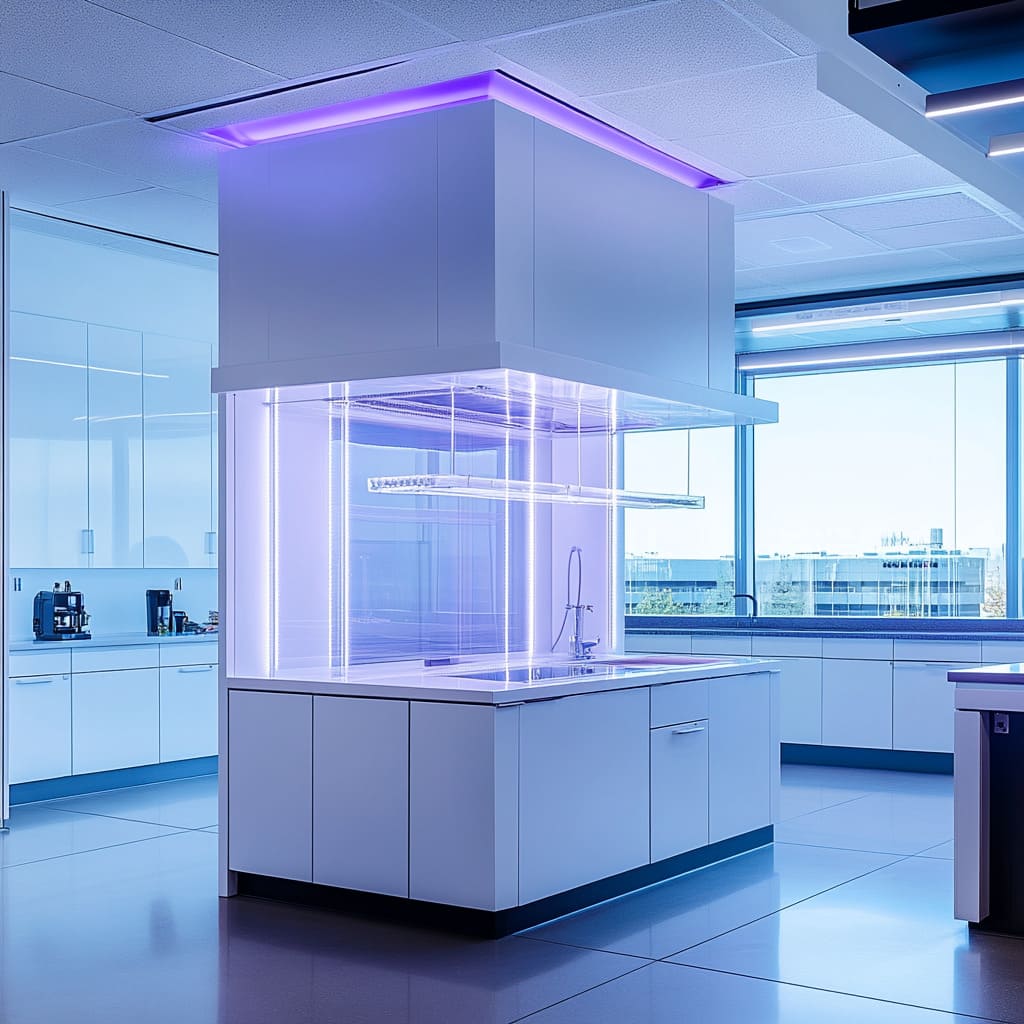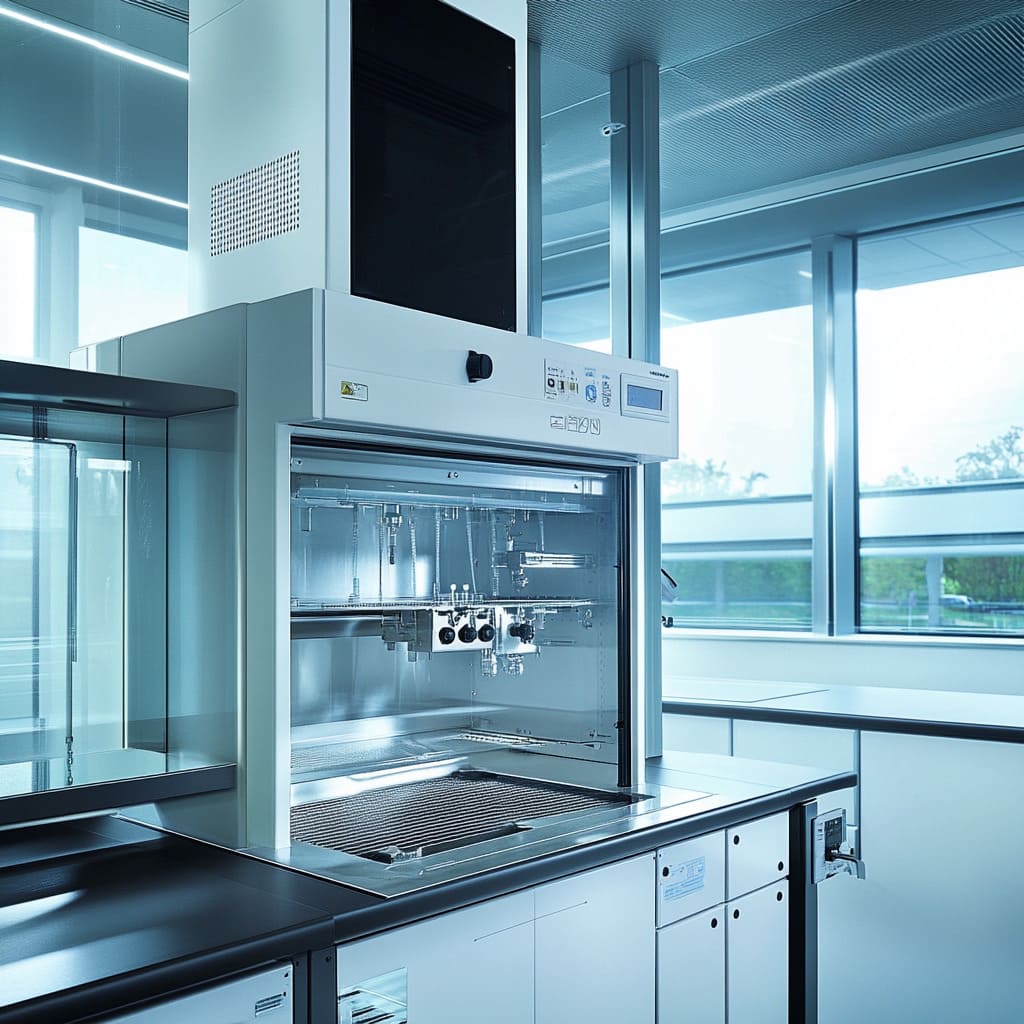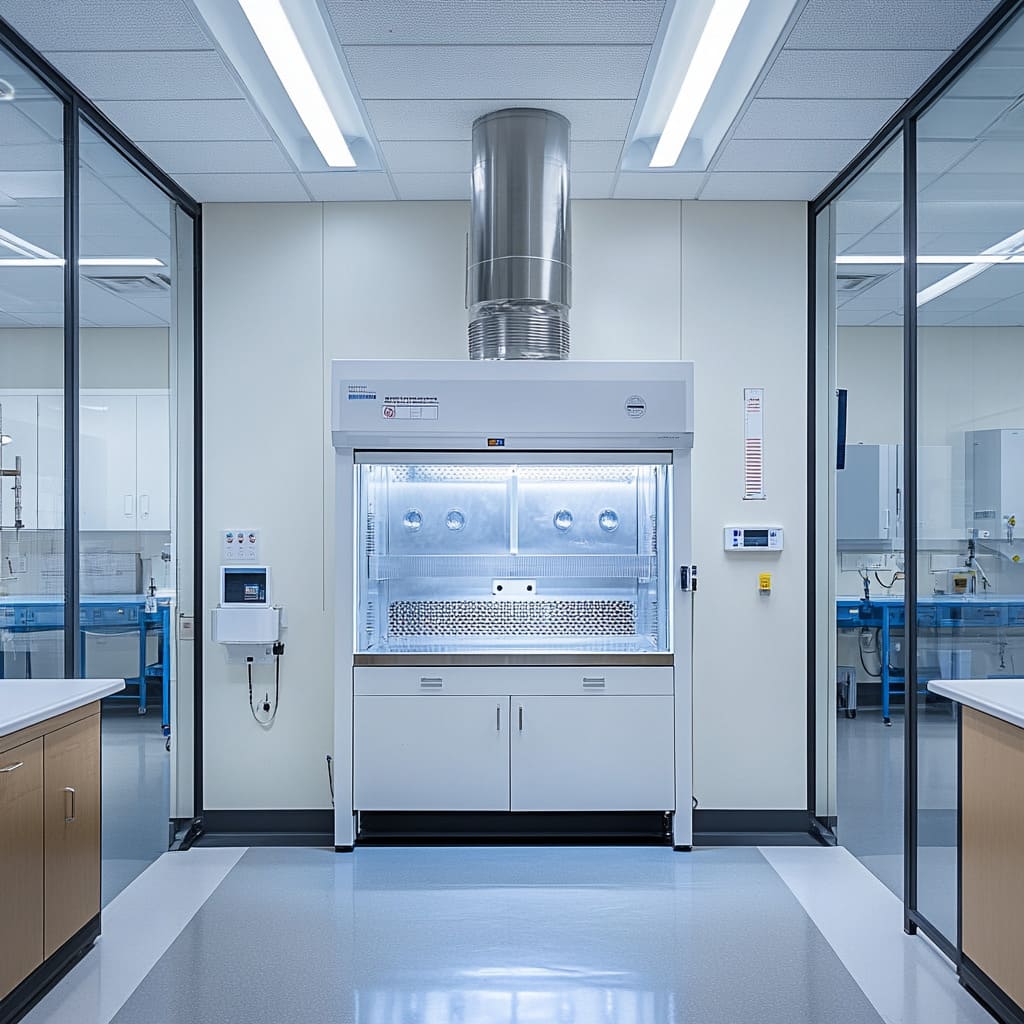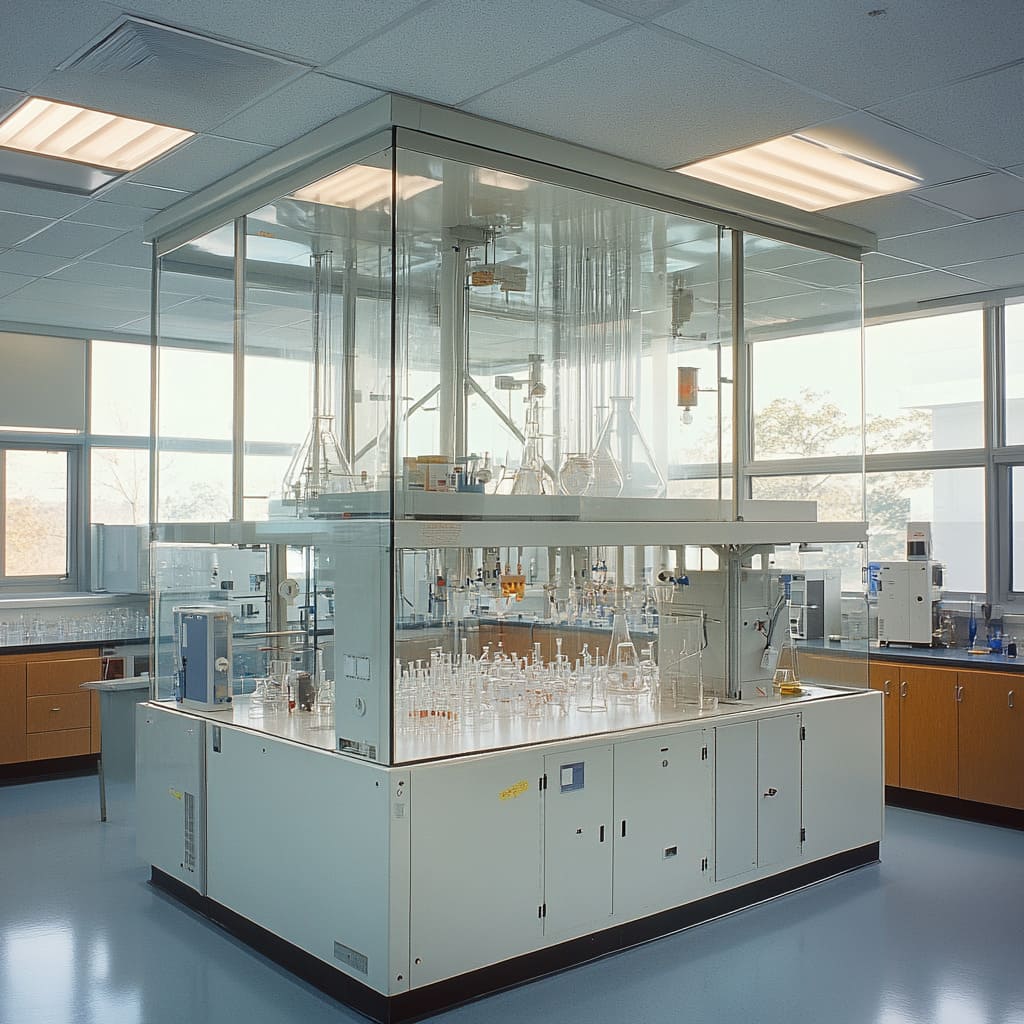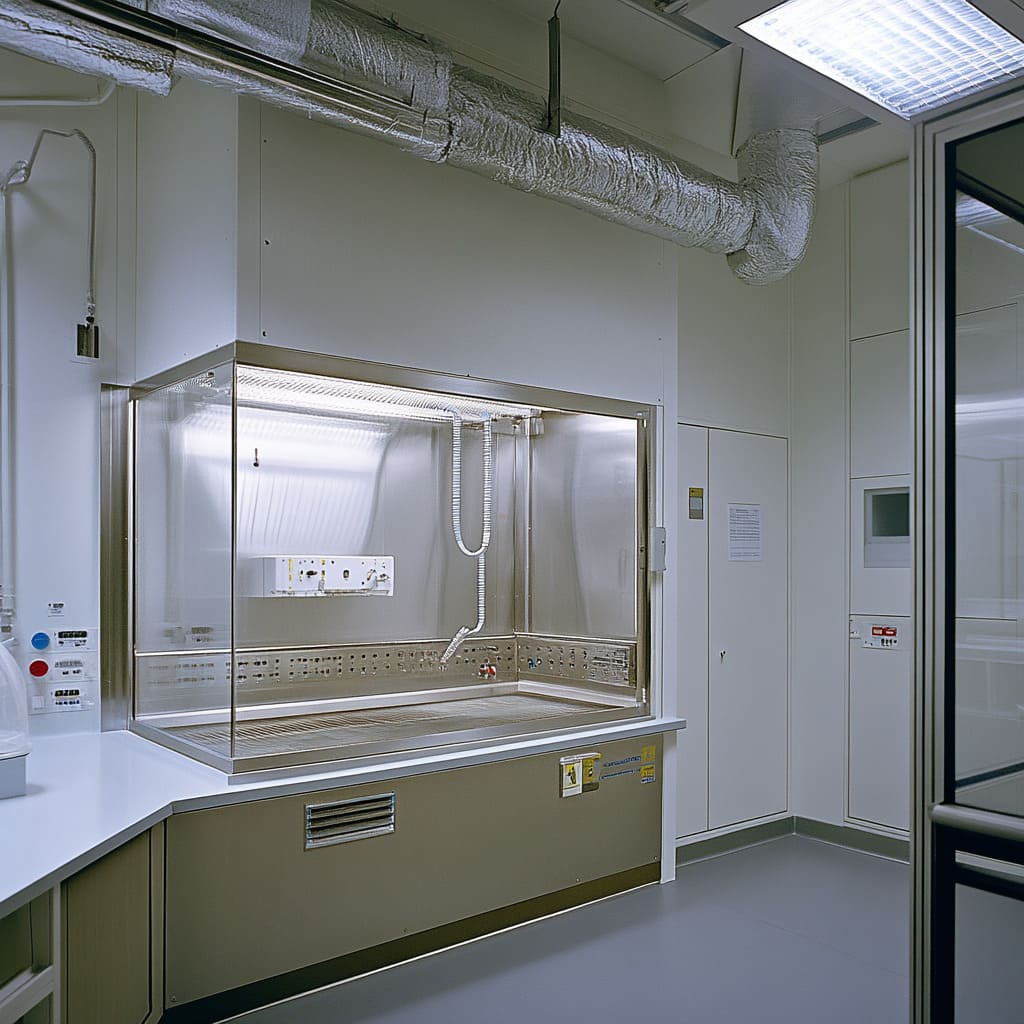Scientists and researchers handle all harmful compounds and chemicals in a lab. Without an adequate safety net, their lives and the samples’ integrity will always be at stake.
That’s why laboratories use certified equipment with advanced features to make their job easy and protect their health. To tackle hazardous materials, they mainly rely on fume hoods.
These workstations can be available in various styles and capabilities. However, their fundamental feature includes a sterile workspace with access from the front side, boasting a glass sash.
These closures are built so the fume hood receives fresh air even when shut. The unwanted air is thrown out from a duct or vent.
Fume hoods are made to handle perchloric acid, radioactive materials, and other explosive or corrosive substances and chemicals. These equipment pieces know how to handle noxious fumes from potentially toxic materials.
They are primarily found in low-traffic areas to maintain maximum air purity and avoid contaminants. Because these containment devices protect users and the environment from contamination risks and other hazards, it will help to know more about them
Uses of fume hoods and safety tips
Fume hoods are installed in a lab setting to vent out chemical gases, vapors, aerosols, mists, fumes, and dust. They also create a physical barrier between the lab and experiments.
Operators and other staff can breathe safely, and the environment can avoid dangerous run-away reactions with this equipment. Due to the negative pressure inside, contaminants fail to escape the hood, even though its opening receives continuous air.
However, the face velocity of the fume hood has to be perfect. Work surface, baffles, airfoil, sash, face, and hood body are some of the components of a fume hood.
When working with this equipment, users must practice precaution. For example, waste cannot be left in the hood.
Traps, condensers, or scrubbers should be in the hood’s apparatus to store and collect unwanted materials. Plus, waste must be removed per the safety codes
Chemicals should be stored in small quantities during any process. Depending on the task’s nature, hoods should run at the maximum level to prevent contaminants from leaking.
Overloading issues should be avoided at all costs. Reagents must be appropriately sealed.
The evaporation level must also be well controlled
Types of fume hoods
Acid digestion fume hood, distillation fume hood, non-fume hood, and ductless fume hood are popular choices.
Distillation fume hoods feature low-height work surfaces, allowing lab staff to work from an elevated position. One needs this type to install and mount taller distillation equipment.
The rest of the traits can be standard, as with other fume hoods. Acid fume hoods use special liners to handle acid at high temperatures.
Non-fume hoods are not suitable for dealing with chemical vapors. Ductless models employ carbon filters to recirculate purified air cleansed of chemical fumes and vapors.
Which fume hood type do you need? Suppose it’s an acid fume hood. You can learn more about it to understand why your facility needs this over other options
Acid fume hood overview
In labs, you work with different chemicals for manipulations and applications while ensuring everyone’s safety. Acid fume hoods are best for these environments.
They store and remove toxic vapors and fumes produced from acids during experiments. Most other fume hoods serve a general purpose.
However, acid hoods built with corrosion-resistant materials can withstand damages caused by acidic gases. How do they work? The acid-resistant fume hoods trap and eliminate toxic gases and vapors from the lab through exhaust systems and airflow techniques.
They maintain negative pressure in the environment to hold those unwanted substances within them for safe removal from the facility
Acid fume hood features and benefits
This lab equipment can boast multiple safety features for easy operation. For example, the sash or the movable panel on the front lets users enter the hood interiors while containing the chemicals.
One must operate the sash carefully to protect airflow and contain fumes. These devices also use alarms to warn people about compromised airflow or other malfunctions.
Due to all these features, acid hoods ensure personnel’s safety from toxic materials. Indoor air also remains safe as the fumes are diverted outside the facility through ducts or other suitable passages
When browsing acid fume hoods, you can look for something that includes Variable Air Volume (VAV) systems. They decrease air volume in the fume cupboard when the hood is not used, and the front window is shut.
New installations can have them fitted as an option. The hood can use energy more efficiently because it uses lower exhaust volumes inside a closed sash.
They also benefit from carbon emissions. One may have to pay a higher price for these fittings upfront.
However, the cost can be recovered quickly through energy saving. Safety and easy temperature control are additional strengths.
Another quality you can focus on is using nonporous materials like polypropylene in the fume hood. Polypropylene’s odor resistance, chemical buildup prevention, and customization possibilities make it versatile
Do you work with perchloric acid?
Lab projects dealing with perchloric acid may benefit from perchloric acid fume hoods, which feature wash-down sprayers and troughs to ensure proper system cleaning. This particular equipment is essential when working with an acid that can react adversely with greases, paper, rubber, wood, and other natural and combustive materials.
Plus, scientists have to be extra careful when handling this acid. It contains shock-sensitive perchloric acid crystals or perchloric salt that can lead to massive explosions.
The salt is produced during the acid heating process. The hood can witness an unwanted buildup without proper provision for washing down such substances, leading to explosion risks.
No matter the facility size and number of fume hoods, planning lab space is critical. Traffic and ventilation conditions can affect these equipment pieces and their functions.
Ensure that each fume hood, including the acid hood, has adequate room for the operator and workflow. Also, consider different fume hood fixtures, including provision for water, gas, air, vacuum, electrical, etc.
If you need additional features or modifications to the equipment, talk to the manufacturer or supplier for support

